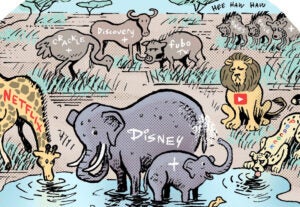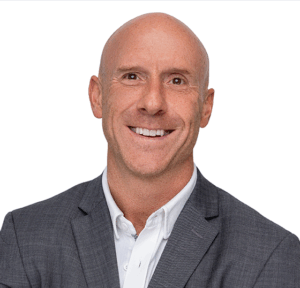 “Data Driven Thinking” is written by members of the media community and contains fresh ideas on the digital revolution in media.
“Data Driven Thinking” is written by members of the media community and contains fresh ideas on the digital revolution in media.
Today’s column is written by Greg Lieber, VP of Business Development at GraphEffect.
Advertisers, welcome to the “professional graph.”
LinkedIn recently announced the launch of its Ads API, which will allow developers to build customized ad solutions for business looking to reach the 187 million users on the professional network. This is an incredible opportunity for LinkedIn to empower advertisers to penetrate the social B2B layer, something that has been very challenging to do thus far on Facebook and Twitter.
This announcement is fantastic news for all advertisers – but especially those in the B2B realm. While Facebook has had an Ads API for over two years, LinkedIn is well positioned to scale the B2B channel similar to the way Facebook has been able to tap into the B2C space. To date, it’s been challenging for advertisers to target professionals as effectively as they can general consumers. For example, Facebook allows you target audiences by workplace (so long as the user has given this information to Facebook), but not by job title or industry. As a result, advertisers looking to pinpoint professionals have had to often take their best guess on Facebook.
LinkedIn’s Ads API presents a powerful opportunity for developers to build great toolkits that will help solve these problems. They own a massive and powerful data set that will allow advertisers to effectively tap into the “professional graph.” In addition to traditional targeting parameters such as location, age, and gender, API-powered LinkedIn tools will be able to verifiably target audiences using criteria that really matters to B2B marketers, such as job title, school, professional skills, and LinkedIn groups.
How can this help B2B advertisers from the get-go? Here are some use cases for advertisers to leverage LinkedIn ads with API-powered tools:
Jobs! (duh). Perhaps the lowest hanging fruit for LinkedIn ad tools will be to help brands navigate the massive pool of job-seeking talent that are active on the platform. Corporate recruiters of all industries will be able to leverage the API to find candidates who are aligned with their organization’s needs. This will serve as a great compliment to its current paid Job Seeker offering.
Hyper-targeted B2B sales queries. Half the challenge for sales and business development is identifying prospects. While 3rd party data helps with this process, there’s a very strong chance that sales targets are already on LinkedIn, and they’ve given the platform all the pertinent info needed. For example, finding the Manager of Business Development of a data solutions company in Evanston, IL no longer becomes a wild goose chase; it is now met with accuracy and precision.
Homing in on the C-suite. Several companies develop products that are aimed purely for the C-suite. Consultants, data solutions architects and more have tailored product offerings that are designed solely for executive use. API-powered LinkedIn tools will enable advertisers to target self-identified executives and scale those placements across the entire platform for more volume.
Timely branding opportunities. Facebook API tools have helped write the book on how to leverage social media for branding purposes (see Starbucks, American Express, and Walmart for some amazing examples). However we’re not all consuming Facebook during work hours, and it may be tough for smaller B2B brands to get into users’ News Feeds. LinkedIn offers a platform that, if addressed properly, can serve as the most effective medium for companies such as Verizon, JPMorgan, and IBM to reach targeted users during the day when they are at work.
There couldn’t be a better time for LinkedIn to introduce its ads API. At its current growth rate (2 members per second) LinkedIn is on pace to have 220 million users by the end of 2013. The biggest question for LinkedIn is how it will continue to develop its ad products to meet the needs of advertisers. Initially, text or text and small image ads will be the ad units available via the API. However, in order for LinkedIn to harness its massive professional graph – and continue to build upon its Q3 revenue of $64 million – the platform could likely introduce richer ad formats via its API.
As 2012 comes to an end, it would behoove advertisers to start getting aggressive on LinkedIn as they look forward to the next 12 months in digital spend. It may have taken awhile, but LinkedIn has made a critical first move in opening the gates to its platform. Brands, now it’s your move.
Follow Greg Lieber (@greglieber) and AdExchanger (@adexchanger) on Twitter.













